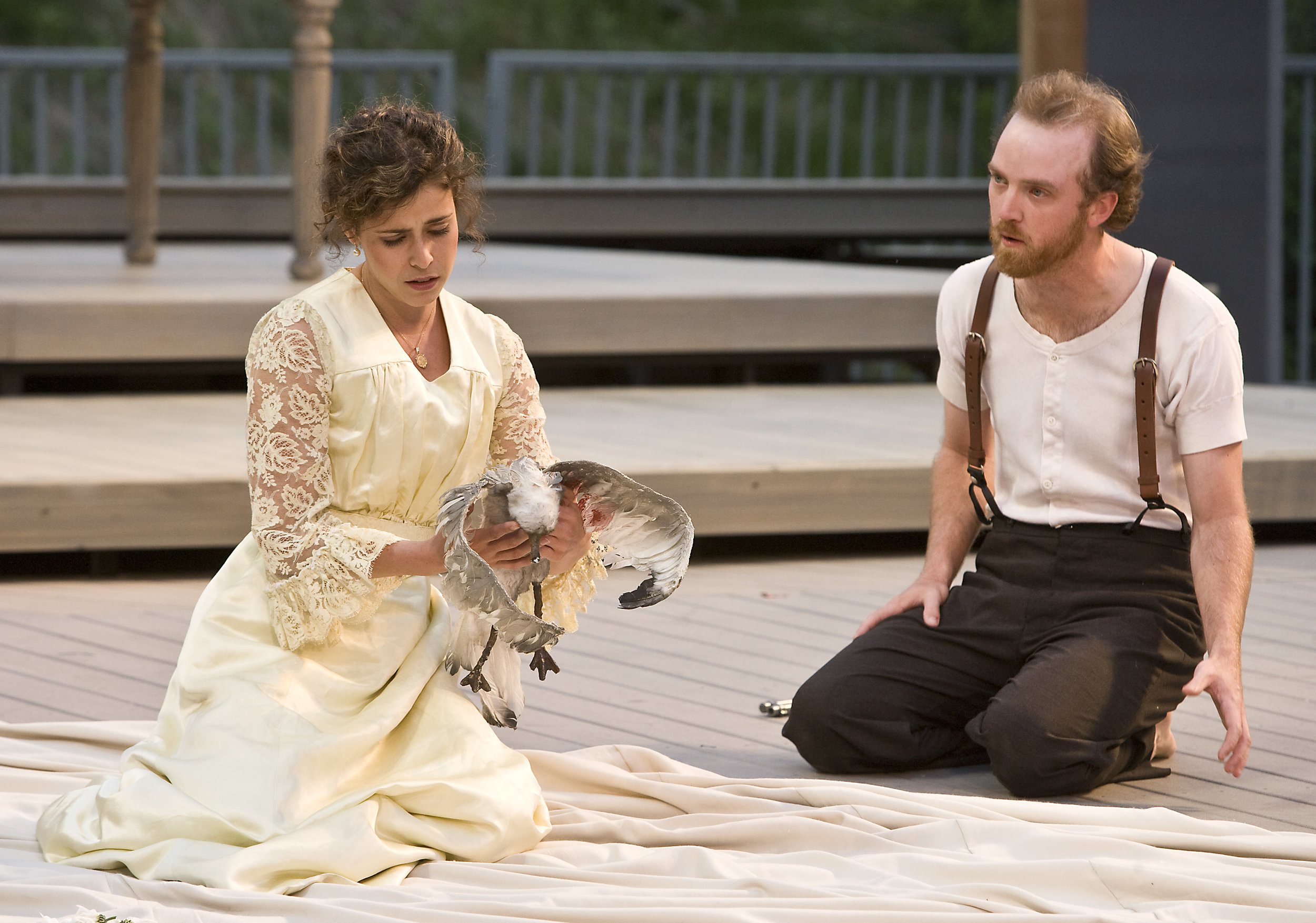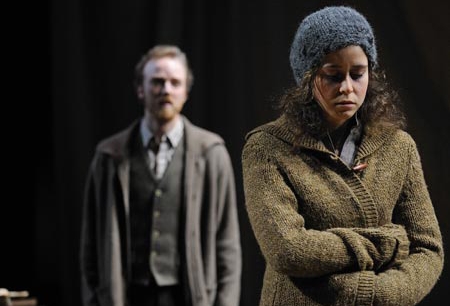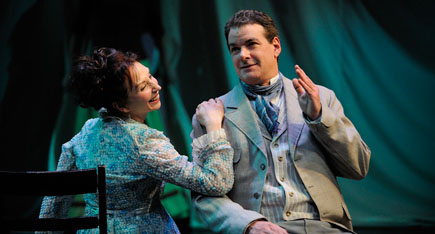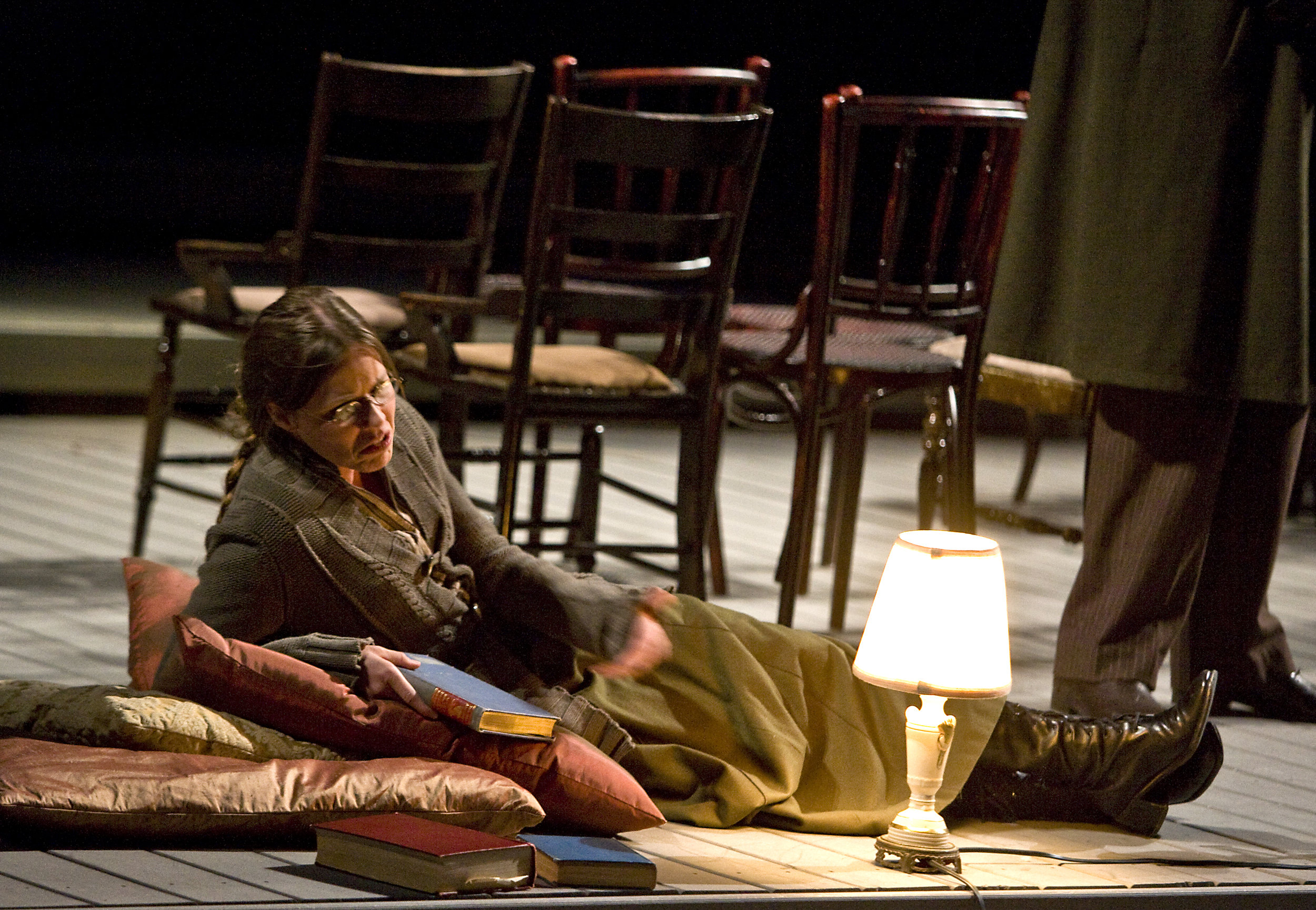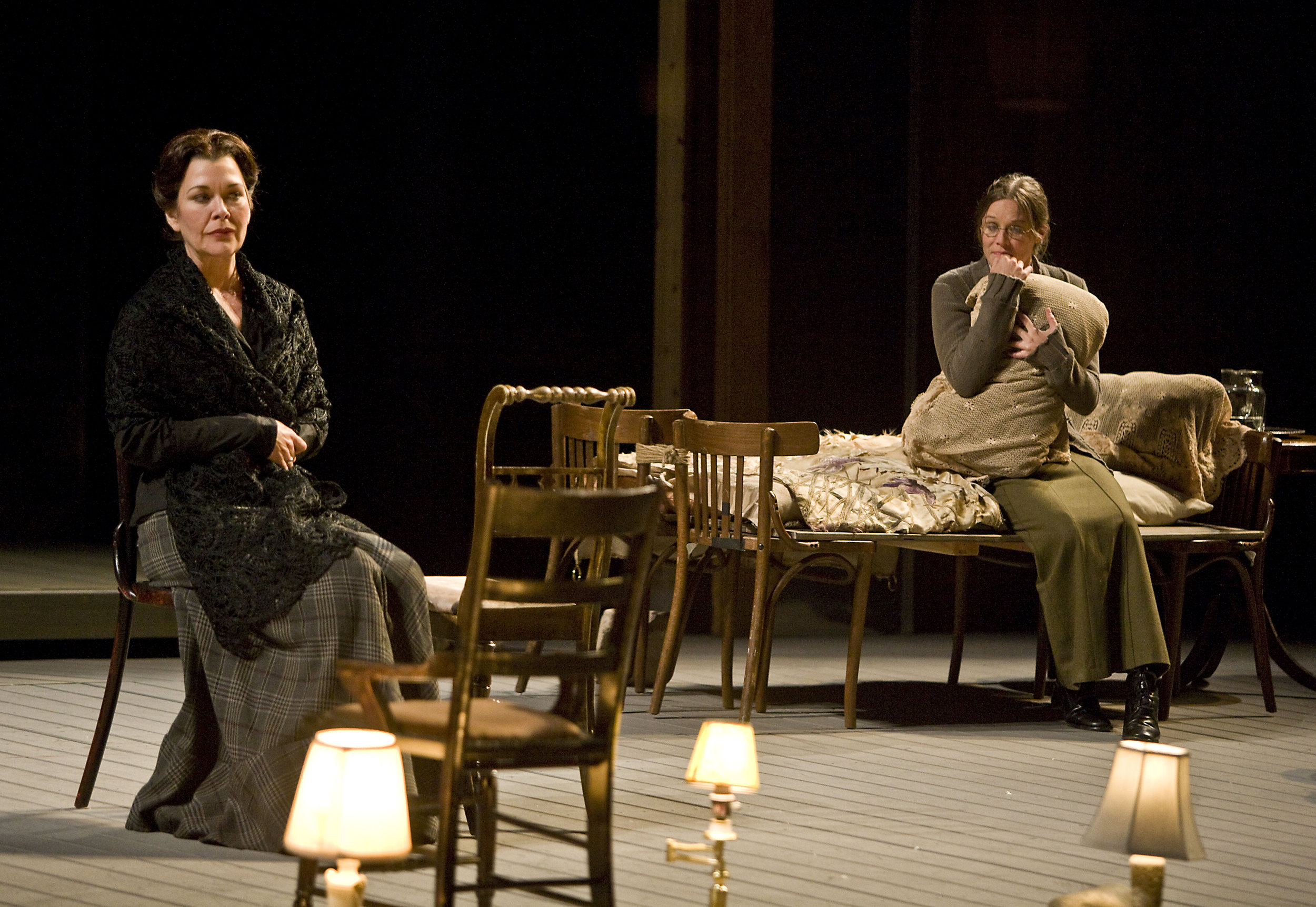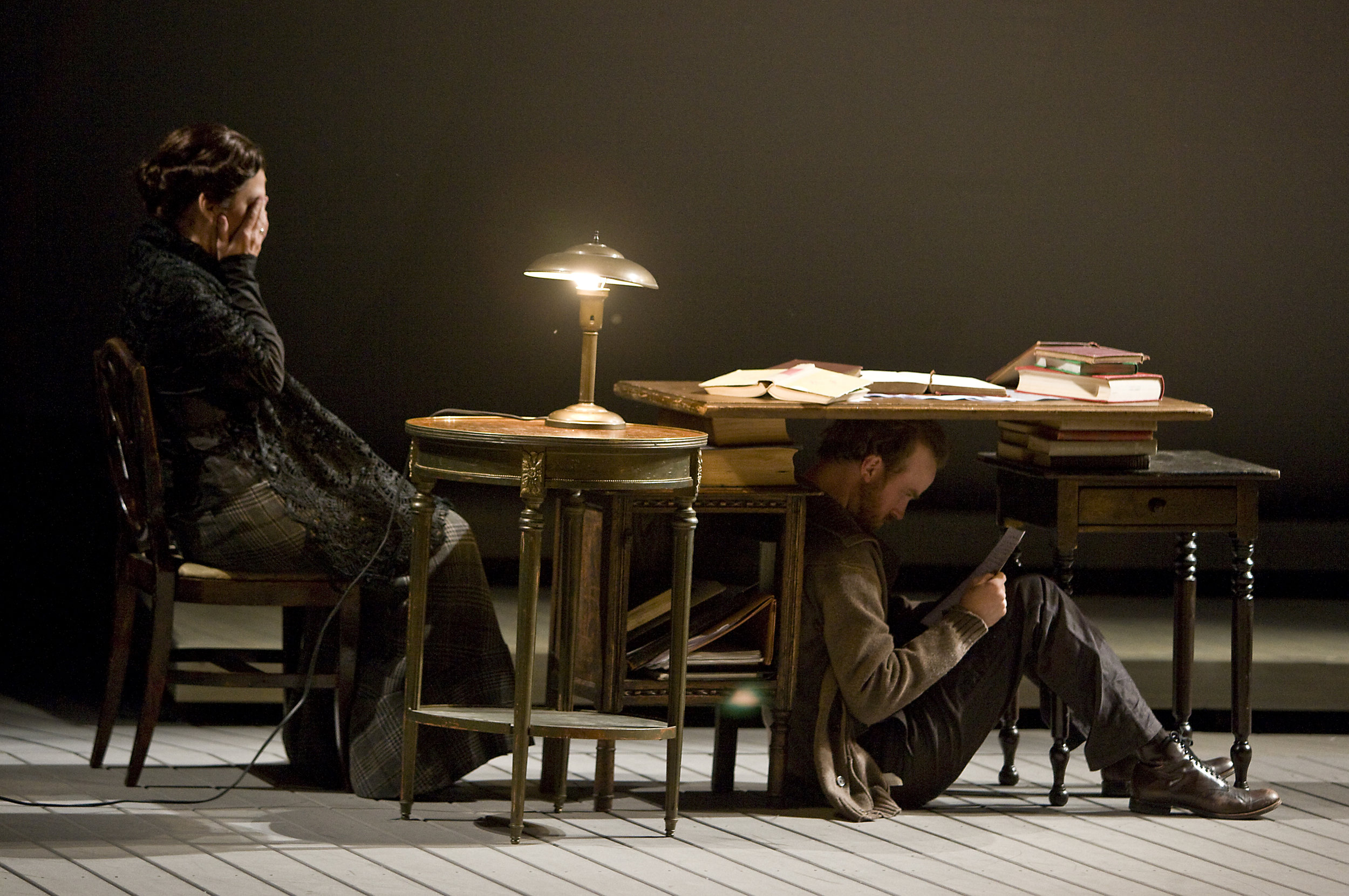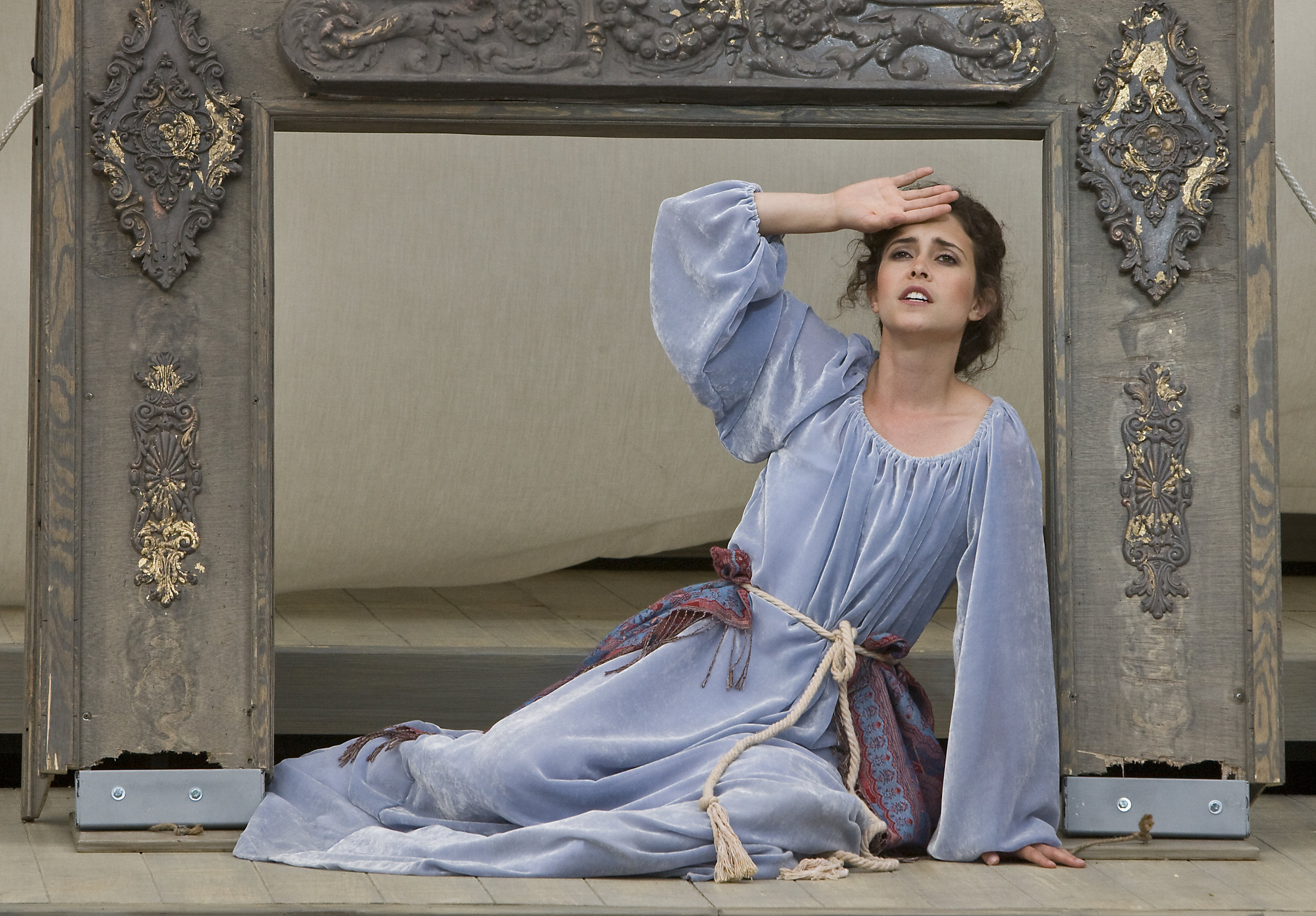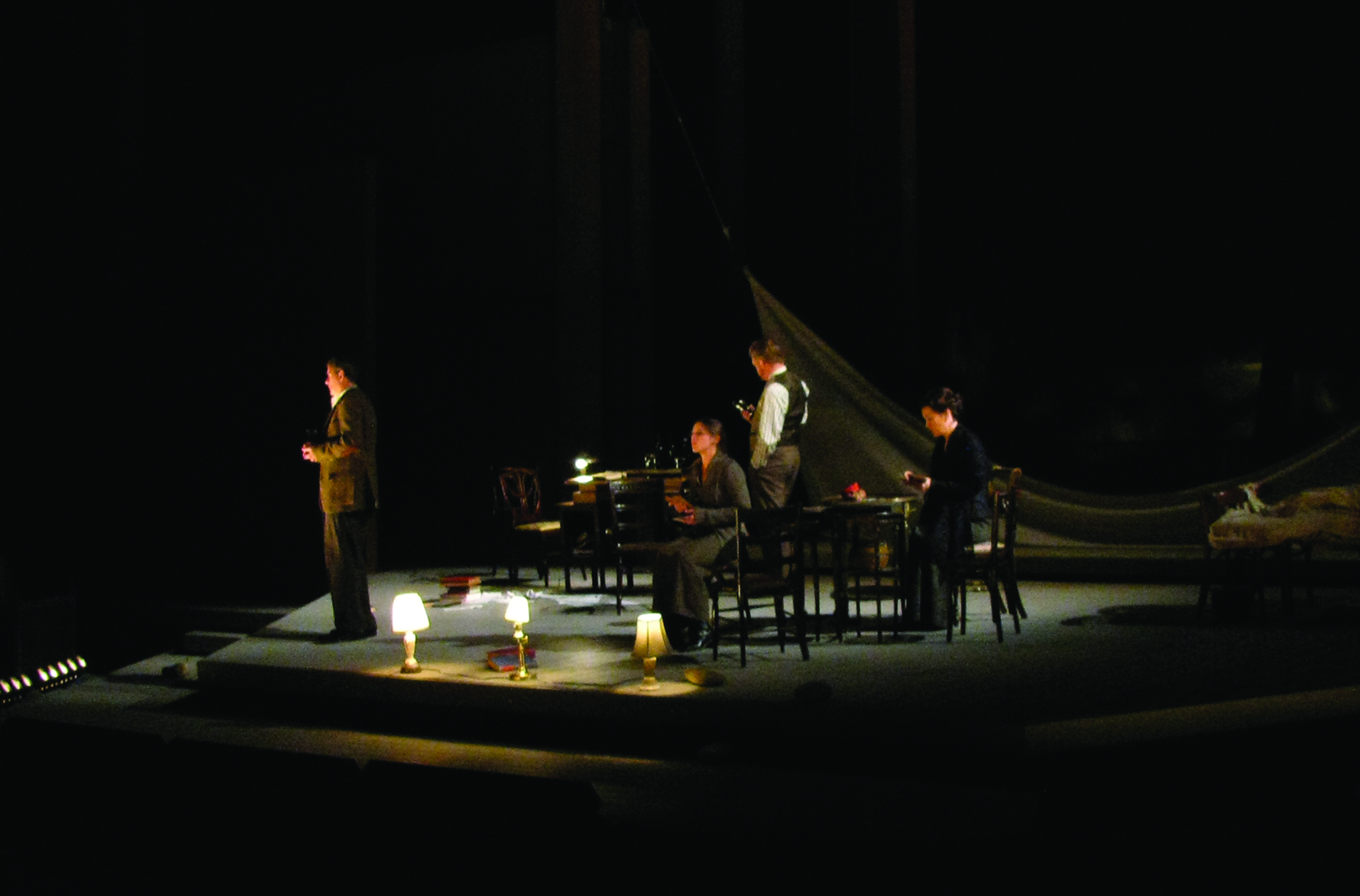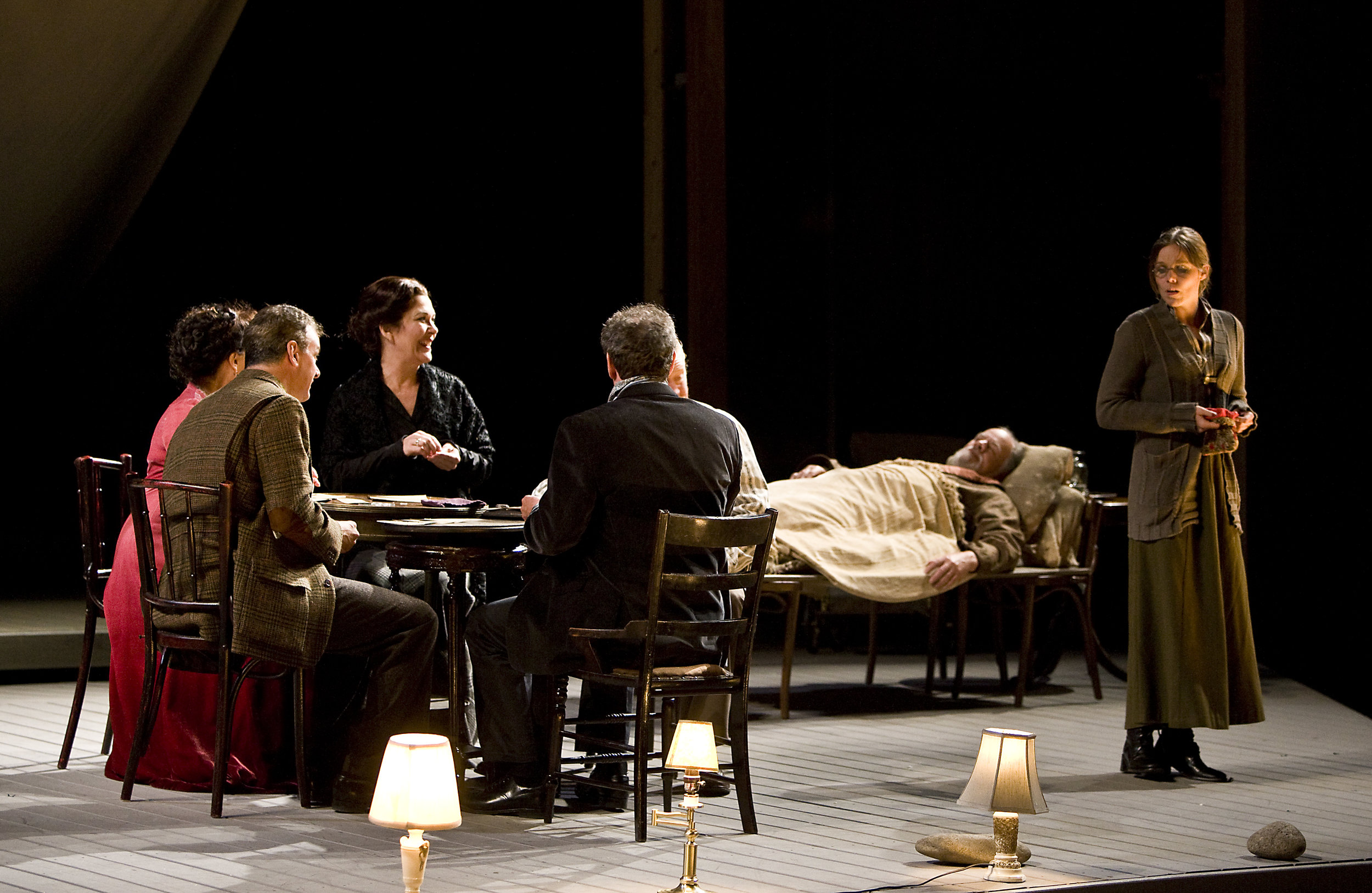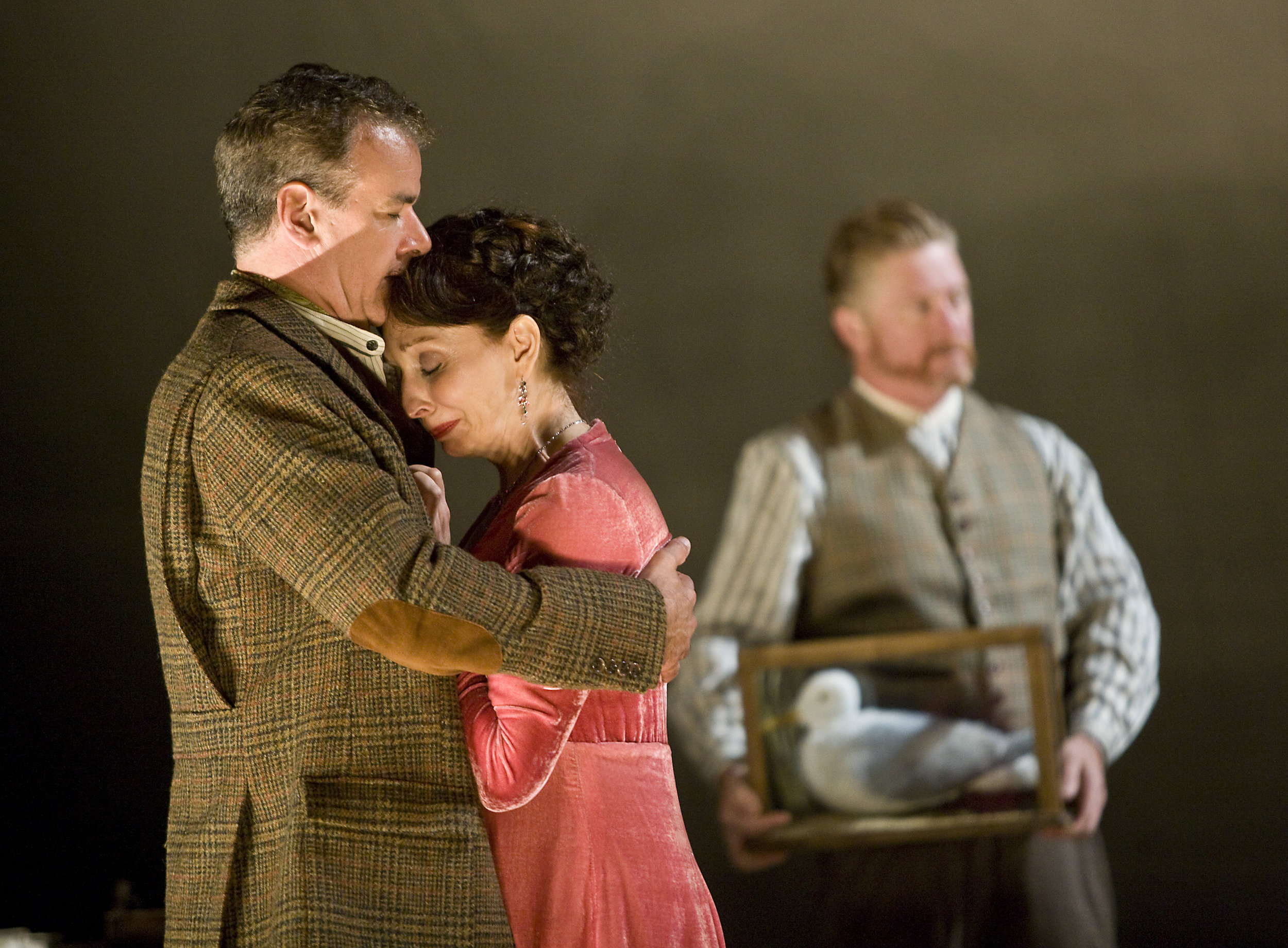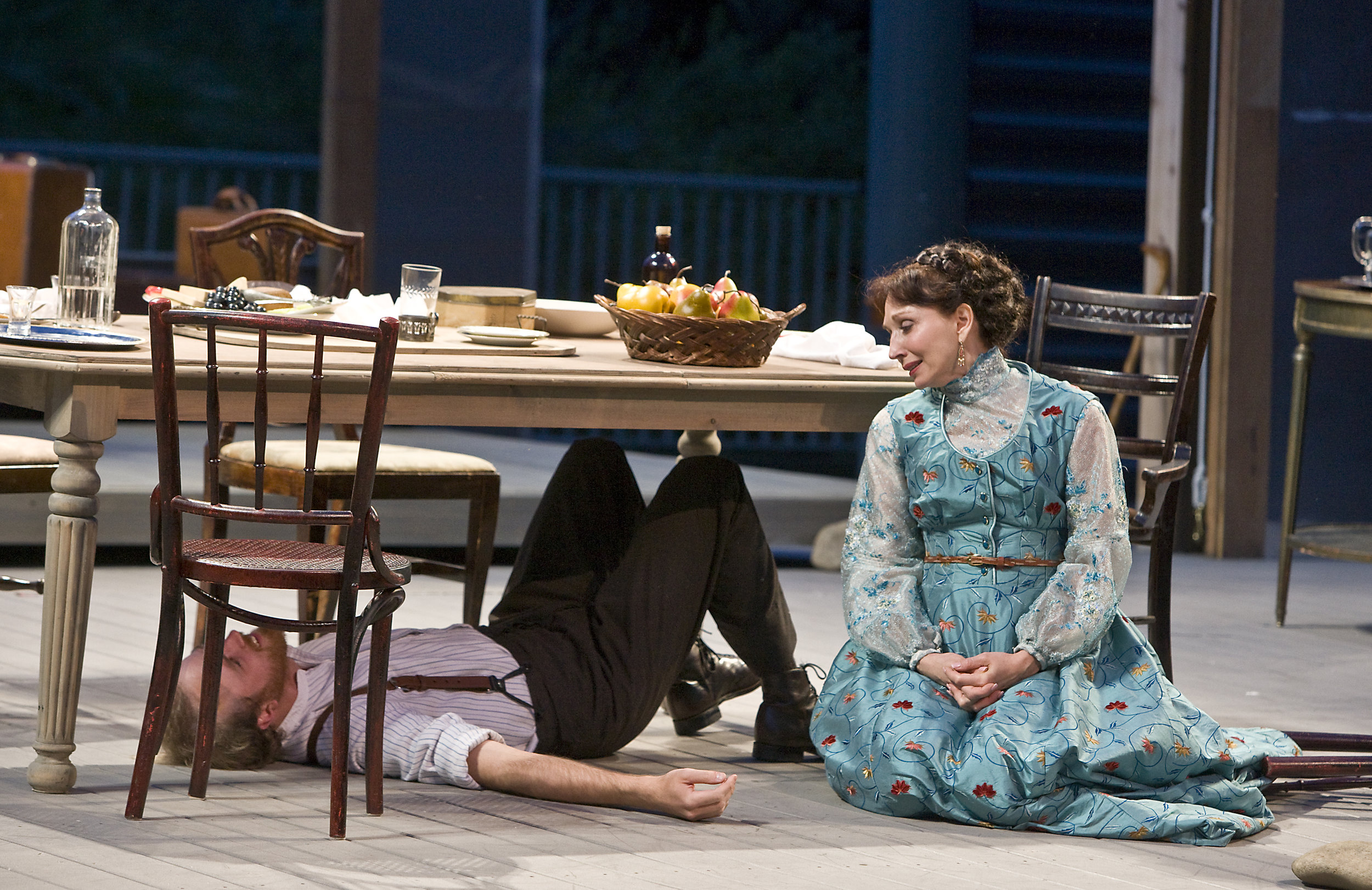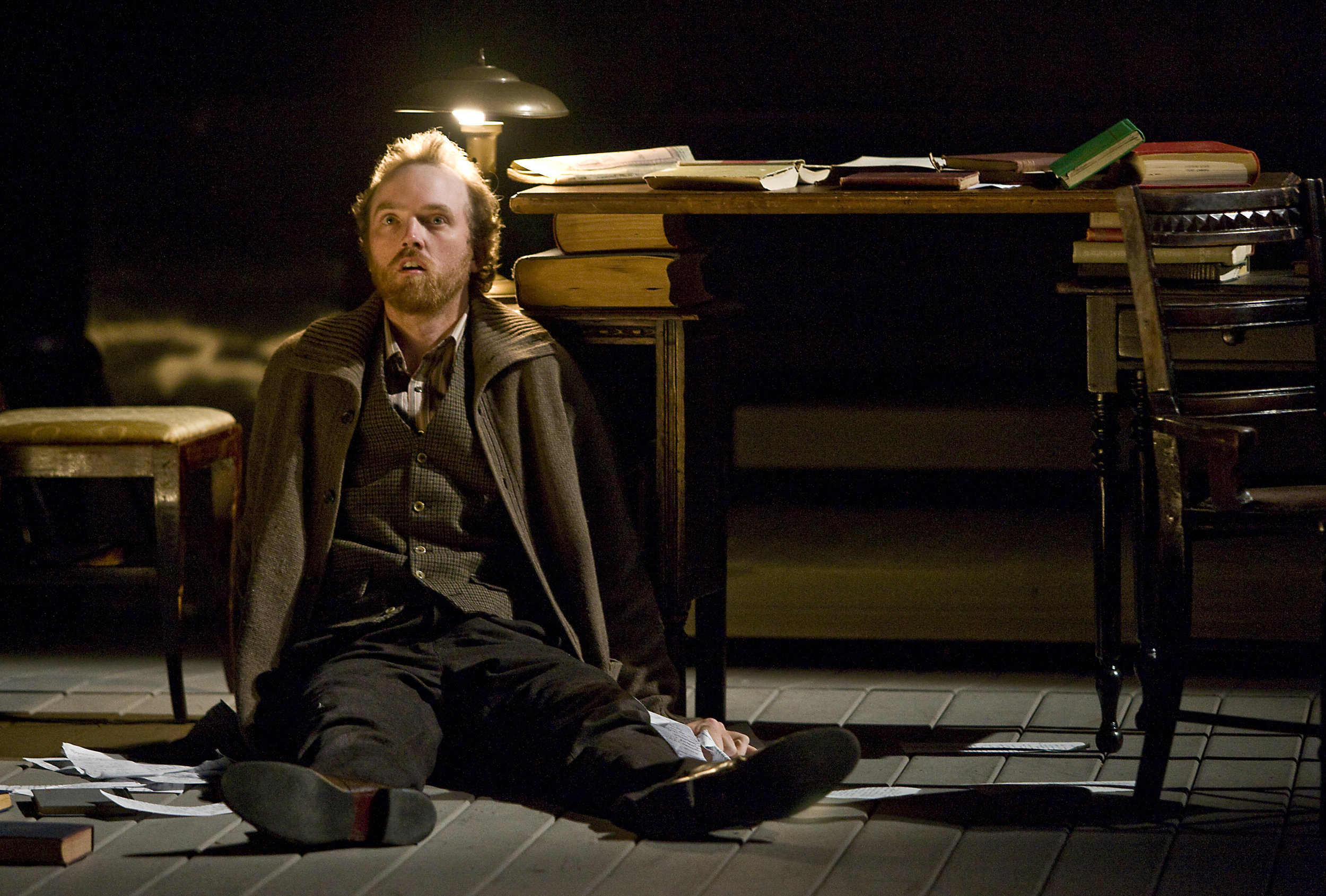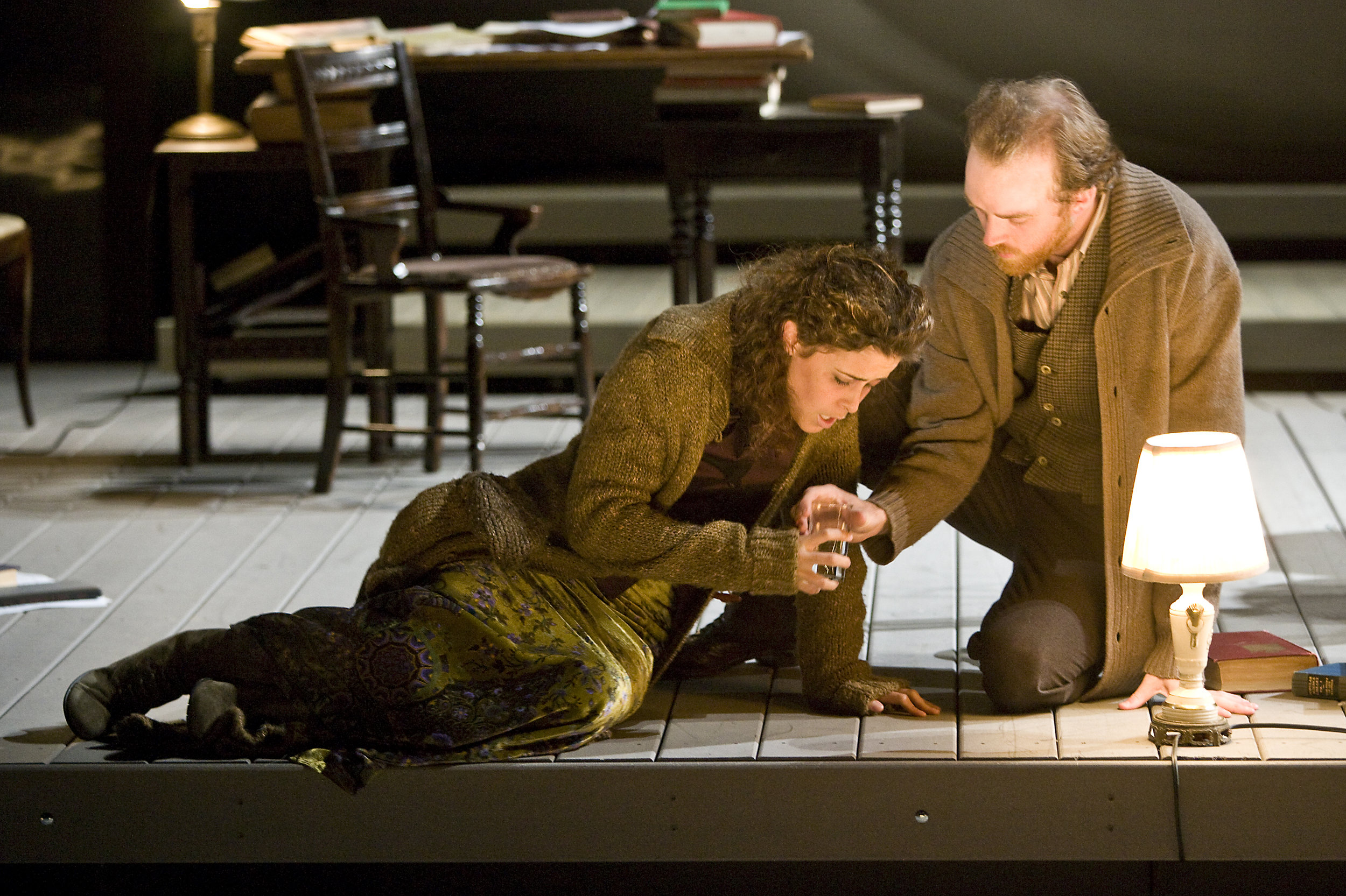THE SEAGULL
Set Design: Russell Metheny | Lighting Design: Peter West
Costume Design: Kim Krumm Sorenson | Sound Design: Fitz Patton
Scroll down to read Drew's director's note for The Seagull at Idaho Shakespeare Festival and Great Lakes Theater.
The Seagull by Anton Chekov | Director's Note
Every performance of a play is an interpretive act, a translation of written text into the living, breathing present. We attempt to transform the imagined, interior experience of an individual author into a theatrical event that stimulates an audience’s collective consciousness. It’s a painstaking and exhilarating process, a process requiring particular delicacy with the plays of Anton Chekhov, given the historical, cultural, aesthetic and linguistic filters through which we must try to perceive his work.
Chekhov assiduously strove to create an innovative dramatic literature of simplicity, truth and honesty. A doctor and writer, renowned for his gentle humanism and a seemingly prophetic sensibility for the pending social upheavals of late-19th century Russia, Chekhov famously requested that life on stage be “just as complicated and just as simple as…in real life. People are sitting at a table having dinner, that’s all, but at the same time their happiness is being created, or their lives are being torn apart.” His plea was rewarded with ground-breaking productions by the young revolutionaries of the Russian theater, Konstantin Stanislavsky and Vladimir Nemirovich-Danchenko. These productions, at the newly created Moscow Art Theatre, profoundly influenced subsequent interpretations of Chekhov’s plays, and established the gold standard for the actors’ craft, throughout the 20th century.
Even today, theatergoers and practitioners must grapple with Stanislavsky’s legacy, as they try to rediscover the spirit of Chekhov’s plays. Though innovative for his time, Stanislavsky’s brand of stage naturalism, achieved through careful orchestration of silence, subtext and atmospheric sound effects, is now largely responsible for the perception of the Chekhovian theater as long, gloomy and ponderously heartfelt. That misconception is all the more surprising given the fact that Chekhov called only one of his major plays, The Three Sisters, ‘a drama,’ while The Seagull is quite clearly called, ‘a comedy.’ Indications of concern over the aesthetic style of the Moscow Art Theatre reveal themselves in Chekhov’s notebooks and letters: “What have you done to my play?” “Stanislavsky has ruined my play.” “You say you have cried at my plays…But this is not why I wrote them, it was Stanislavsky who turned them into crybabies.” Presumably fueled by exasperation, Chekhov promised, “I shall write a new play and the first words will be, ‘It’s wonderful, this calm! No birds, no dogs, no cuckoos, no owls, no nightingales, no clocks, no sleigh bell, no crickets.’”
How, over a hundred years later, do we tap into the invigoratingly unsentimental theatricality, ironic comedy and heart-stopping humanity, that account for Chekhov’s reputation as one of the greatest playwrights of all time? Is it possible for us to span the distance of time, culture and language sufficiently to rekindle the spirit of The Seagull, which prompted one viewer in its day to proclaim that the play “both moved the spectator deeply and startled him, quite often upsetting all his preconceived notions about the tasks of artistic creation, all his views on art?” The innovations of Chekhov’s plays, once radical and revolutionary, have become commonplace (though no less significant) today; however, the impulse for artistic expression that compels, enraptures and tortures the human souls in The Seagull will forever fascinate and challenge us.
-Drew Barr
